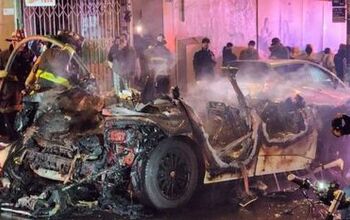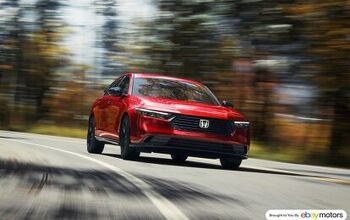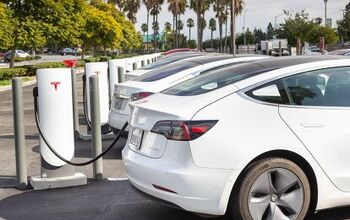Best and Worst Drivers by City

With crash statistics having taken a turn for the worse in recent years, analysts have been pouring over the relevant data to determine why. Though the resulting statistics can tell a lot of different stories, including which U.S. cities tend to boast the best and worst drivers.
Based on insurance data tabulated by LendingTree’s QuoteWizard, the cities with the worst drivers (in descending order) include Virginia Beach, VA; Dayton, OH; Riverside, CA; Indianapolis, IN; Fresno, CA; Sacramento, CA; Bakersfield, CA; Greenville, NC; Salt Lake City, UT; Los Angeles, CA; and Greensboro, NC.
The cities with the best drivers (ranked best to worst) were reportedly Detroit, MI; Little Rock, AK; Louisville, KY; Hartford, CT; Baton Rouge, LA; Lexington, KY; Oklahoma City, OK; New Orleans, LA; Philadelphia, PA; Las Vegas, NV; and Tulsa, OK.
QuoteWizard analyzed over six million car insurance quotes from drivers in the 70 largest cities in America with a focus on the number of speeding tickets, citations (other moving violations), overall accidents, and DUIs. It then ranked each city in every category, determining their final position by averaging them against each other.
The results certainly play into assumptions that California has a surplus of bad drivers. Los Angeles in particular seems rife with road rage and unpredictable traffic jams failing to coincide with rush hour. The Bay Area always seems eager to throw me on-road curve balls whenever I’m driving while lacking some of the creative solutions (and tolerance for them) found in places like New York City.
On the East Coast, driving often borders on pure chaos with everyone simultaneously adapting to the situation around them. But it often takes place at lower speeds (excluding Alaska and Hawaii, New York State has the lowest average speeds in the country) and includes officers helping to direct traffic at problem intersections at specific times of the day. Mass transit and a surplus of taxi services also help to mitigate drunk driving after the sun goes down.
Meanwhile, the West Coast offers smoother sailing at higher speeds until something suddenly goes wrong. Its sprawling geography means average trips are longer and traffic jams are harder to anticipate. But that doesn’t seem sufficient to account for the overall differences, especially considering how many dents you tend to see on vehicles parked in NYC vs. Los Angeles.
As with any study, there are some highly probable blind spots. Your author wouldn’t necessarily equate speeding with “bad driving” and an area seeing higher-than-average citations may just have a police force that’s extra focused on pulling people over.
Detroit makes for a good example. Reports have been circulating for years that Michigan has been suffering from a police officer shortage and the Motor City has been notorious for its high crime rate far longer than that. The above results may just be an issue of police having bigger fish to fry than nabbing commuters for moving violations. The state also has some of the highest speed limits in the Midwest.
Michiganders likewise tend to be speeders, making it hard to single out anybody in particular for exceeding posted limits. As someone who has done a lot of driving across the United States and is a native of The Mitten, I can tell you that most people tend to drive as fast as road conditions will allow in Michigan. Winter weather guarantees a few months of slow driving and often leaves summer pavement in mixed conditions. But, under ideal circumstances, it’s not unusual to see expressway traffic collectively averaging well above 80 mph.
Meanwhile, if we look at Detroit’s crash statistics, we can see the city boasts one of the highest fatality rates (per capita) in the nation. This is particularly interesting because the overall accident rate is quite low. Based on data tabulated by Forbes, drivers in Los Angeles are significantly more likely to experience an accident. However, while the number of crashes is modest, collisions in Detroit tend to be more severe with the grim statistics likely stemming from a combination of the city’s rougher-than-average roads, lower-than-average population density, and assumed penchant for speeding.
That’s not to suggest studies about roadway safety aren’t useful. But the above serves as an important reminder that the context of data often matters just as much as the data itself.
It’s worth looking at the insurance data provided by QuoteWizard. However, most of it just ranks how each city fared in terms of accidents, drunk driving, speeding tickets, and other citations. It’s something one should take with a side of skepticism and likely makes a better conversation starter about roadway safety than the definitive data set for which places are actually the safest.
Detroit’s high ranking may just be the result of there being fewer people willing to report minor accidents and local police not caring so much about moving violations. Then again, maybe the rougher road conditions and seasonal changes have made its drivers more skilled by throwing year-round challenges that help keep the senses sharp.
[Image: pathdoc/Shutterstock.com]
Become a TTAC insider. Get the latest news, features, TTAC takes, and everything else that gets to the truth about cars first by subscribing to our newsletter.

A staunch consumer advocate tracking industry trends and regulation. Before joining TTAC, Matt spent a decade working for marketing and research firms based in NYC. Clients included several of the world’s largest automakers, global tire brands, and aftermarket part suppliers. Dissatisfied with the corporate world and resentful of having to wear suits everyday, he pivoted to writing about cars. Since then, that man has become an ardent supporter of the right-to-repair movement, been interviewed on the auto industry by national radio broadcasts, driven more rental cars than anyone ever should, participated in amateur rallying events, and received the requisite minimum training as sanctioned by the SCCA. Handy with a wrench, Matt grew up surrounded by Detroit auto workers and managed to get a pizza delivery job before he was legally eligible. He later found himself driving box trucks through Manhattan, guaranteeing future sympathy for actual truckers. He continues to conduct research pertaining to the automotive sector as an independent contractor and has since moved back to his native Michigan, closer to where the cars are born. A contrarian, Matt claims to prefer understeer — stating that front and all-wheel drive vehicles cater best to his driving style.
More by Matt Posky
Latest Car Reviews
Read moreLatest Product Reviews
Read moreRecent Comments
- Redapple2 I ve slept on it. I would take one on a 3 yr lease for $199/mo- ($1000 down total). Evil gm Vampire gave me this deal in 2012.
- 3SpeedAutomatic Would prefer a non-turbo with a stick shift. That would be more fun to drive!!🚗🚗🚗Also, I could teach my nieces and nephews to drive a standard. You'd be surprised how many folks can't handle a stick shift today. Yet, in Europe, most rental cars come with a stick unless you specify otherwise.
- Jeffrey Henry Ford said about innovation, “ If I had asked my customers what they wanted, then they would have said a faster horse." Change is inevitable!!!https://www.wri.org/insights/countries-adopting-electric-vehicles-fastest#:~:text=Currently%2C%2016%20countries%2C%20including%20Canada,create%20and%20enforce%20such%20policies.
- ToolGuy If these guys opened a hotel outside Cincinnati I would go there to sleep, and to dream.
- ToolGuy Michelin's price increases mean that my relationship with them as a customer is not sustainable. 🙁


































Comments
Join the conversation
A lot of drivers in older cities with narrow winding streets get grief from others in newer cities. YOU try driving on streets laid out by meandering cows three centuries ago, EVERY DAY! It's enough to drive anyone batty eventually.
Best and worst drivers? I think driving cultures vary between cities, small variations they can be. But, when you drive in another "foreign" region these small variations become evident and sometimes annoying.
It's the same all over the world. Each region whines about how poor others drive. The best measure of driving is looking at fatalities. Why doesn't TTAC have an article on global vehicle fatalities. This might shed some light on where the best drivers, regulations and vehicle standards are. You might be surprised where the USA sits among your peers.